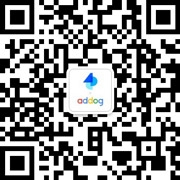
本案例默认翻译为中文,点击可切换回原语言
已切换成原语言,点击可翻译成中文
汤米·席尔菲格自适应
案例简介:背景 人们很少将衣服视为需要创新的物品。我们生活在一个专为行动不便的人设计的世界中,他们认为 “穿衣服” 是理所当然的。 然而,全球五分之一的人患有残疾,他们剥夺了他们通过衣服表达自我的人权,因为他们在与过时的技术类似纽扣作斗争。 在汤米·希尔菲格 (Tommy Hilfiger) 的一个由产品设计师和营销人员组成的小型臭鼬工厂团队的合作和帮助下,我们将开发、设计和推出一个全新的 “自适应” 产品系列,使独立着装成为可能。 这将是时尚界的第一次。对失败的恐惧和缺乏专业知识的恐惧使主流品牌甚至无法尝试。赌注很高: 我们可能会胜利或被嘲笑。 因此,为了服务很少咨询时尚的观众,我们直接找到了来源-残疾人-并寻求他们的帮助。 描述创意 (投票40%) 我们学习并将包容性设计的原则应用于产品开发和营销。 我们的工作植根于这样一种理念,即通过包括更多的人,一个团队变得更加创新。当创新带来更大的吸引力时,这是一个额外的好处,超出了他们设计服务的 “边缘案例” 需求 (Siri是包容性设计的结果)。然而,时尚是一个臭名昭著的独家行业。 因此,我们为我们的工作建立了一个口头禅: “没有我们,没有我们。” 如果我们真的要改变时装业为残疾人服务的方式,我们将不得不超越单纯的广告表现。我们需要将残疾人纳入设计过程的每个阶段。 这意味着不仅要学习如何设计更好的衣服,还要学习如何改进产品描述和网页,重新培训客户服务,使广告更易于访问,辅助设备更易于使用。 描述执行 (投票40%) 我们想确保我们是与消费者一起设计的,而不仅仅是为他们设计的。 为了创造七个全新的服装创新,我们建立了一个专有的在线研究平台,将我们的团队与150名残疾人及其护理人员联系起来。 他们的投入帮助我们开发了七个产品创新: ?可调节的折边以适应肢体差异 ?裤子上的双门襟可帮助就座的穿着者打开和关闭 ?轻松打开领口,可将衬衫拉到头上-对护理人员尤其重要 ?取代传统按钮的磁性按钮 ?带滑轮的单手磁性拉链 ?护理人员易于穿衣 ?容纳腿部支架的宽腿开口 这些创新可以在男性,女性和儿童的几乎1,500项目中找到: 连衣裙,衬衫,t恤,裤子和裙子。这些物品实际上与主线相同,并且设置在相同的价格点上。 列出结果 (投票20%) 结果是保密的。
汤米·席尔菲格自适应
案例简介:Background People rarely think of clothes as items in need of innovation. We live in a world designed for people with full mobility, who take ‘getting dressed’ for granted. However, one in five people globally have disabilities that deny them the human right to self-expression through clothes because they struggle with outdated technologies - like buttons. With the partnership and help of a small, skunk works team of product designers and marketers at Tommy Hilfiger, we would develop, design and launch an entirely new “adaptive” product range to make independent dressing possible. It would be a first in the fashion world. Fear of failure and lack of know-how had kept mainstream brands from even trying. The stakes were high: we could be triumphant, or pilloried. So, to serve an audience that was rarely consulted about fashion, we went directly to the source- people with disabilities - and asked for their help. Describe the creative idea (40% of vote) We learned and applied the principles of inclusive design to both product development and marketing. Our work was rooted in the idea that by including more people, a team becomes significantly more innovative. It’s an added benefit when innovations result in greater appeal beyond the ‘edge case’ needs they were designed to serve (Siri is a result of inclusive design). However, fashion is a notoriously exclusive industry. So we established a mantra for our work: “Nothing about us, without us.” If we were truly going to change how the fashion industry serves people with disabilities, we’d have to look beyond mere representation in advertising. We’d need to include people with disabilities in every stage of our design process. This meant learning not just how to design better clothes, but how to improve product descriptions and web pages, retraining customer service, making ads more accessible and assistive devices easier to use. Describe the execution (40% of vote) We wanted to ensure we were designing with our consumers, not just for them. To create seven totally new clothing innovations, we established a proprietary online research platform, connecting our team with 150 people with disabilities and their caregivers. Their input helped us develop seven product innovations: ? Adjustable hems to accommodate limb differences ? Double plackets in pants to assist a seated wearer with opening and closing ? Easy open necklines for pulling shirts over the head - especially important for caregivers ? Magnetic buttons that replace traditional buttons ? One-handed magnetic zipper with pulley ? Seated wear back openings ease of dressing by caregivers ? Wide leg openings that accommodate leg braces These innovations can be found in almost 1,500 items for men, women and children: dresses, shirts, tees, trousers and skirts. These items are virtually identical to the main line and set at the same price point. List the results (20% of vote) Results are confidential.
Tommy Hilfiger Adaptive
案例简介:背景 人们很少将衣服视为需要创新的物品。我们生活在一个专为行动不便的人设计的世界中,他们认为 “穿衣服” 是理所当然的。 然而,全球五分之一的人患有残疾,他们剥夺了他们通过衣服表达自我的人权,因为他们在与过时的技术类似纽扣作斗争。 在汤米·希尔菲格 (Tommy Hilfiger) 的一个由产品设计师和营销人员组成的小型臭鼬工厂团队的合作和帮助下,我们将开发、设计和推出一个全新的 “自适应” 产品系列,使独立着装成为可能。 这将是时尚界的第一次。对失败的恐惧和缺乏专业知识的恐惧使主流品牌甚至无法尝试。赌注很高: 我们可能会胜利或被嘲笑。 因此,为了服务很少咨询时尚的观众,我们直接找到了来源-残疾人-并寻求他们的帮助。 描述创意 (投票40%) 我们学习并将包容性设计的原则应用于产品开发和营销。 我们的工作植根于这样一种理念,即通过包括更多的人,一个团队变得更加创新。当创新带来更大的吸引力时,这是一个额外的好处,超出了他们设计服务的 “边缘案例” 需求 (Siri是包容性设计的结果)。然而,时尚是一个臭名昭著的独家行业。 因此,我们为我们的工作建立了一个口头禅: “没有我们,没有我们。” 如果我们真的要改变时装业为残疾人服务的方式,我们将不得不超越单纯的广告表现。我们需要将残疾人纳入设计过程的每个阶段。 这意味着不仅要学习如何设计更好的衣服,还要学习如何改进产品描述和网页,重新培训客户服务,使广告更易于访问,辅助设备更易于使用。 描述执行 (投票40%) 我们想确保我们是与消费者一起设计的,而不仅仅是为他们设计的。 为了创造七个全新的服装创新,我们建立了一个专有的在线研究平台,将我们的团队与150名残疾人及其护理人员联系起来。 他们的投入帮助我们开发了七个产品创新: ?可调节的折边以适应肢体差异 ?裤子上的双门襟可帮助就座的穿着者打开和关闭 ?轻松打开领口,可将衬衫拉到头上-对护理人员尤其重要 ?取代传统按钮的磁性按钮 ?带滑轮的单手磁性拉链 ?护理人员易于穿衣 ?容纳腿部支架的宽腿开口 这些创新可以在男性,女性和儿童的几乎1,500项目中找到: 连衣裙,衬衫,t恤,裤子和裙子。这些物品实际上与主线相同,并且设置在相同的价格点上。 列出结果 (投票20%) 结果是保密的。
Tommy Hilfiger Adaptive
案例简介:Background People rarely think of clothes as items in need of innovation. We live in a world designed for people with full mobility, who take ‘getting dressed’ for granted. However, one in five people globally have disabilities that deny them the human right to self-expression through clothes because they struggle with outdated technologies - like buttons. With the partnership and help of a small, skunk works team of product designers and marketers at Tommy Hilfiger, we would develop, design and launch an entirely new “adaptive” product range to make independent dressing possible. It would be a first in the fashion world. Fear of failure and lack of know-how had kept mainstream brands from even trying. The stakes were high: we could be triumphant, or pilloried. So, to serve an audience that was rarely consulted about fashion, we went directly to the source- people with disabilities - and asked for their help. Describe the creative idea (40% of vote) We learned and applied the principles of inclusive design to both product development and marketing. Our work was rooted in the idea that by including more people, a team becomes significantly more innovative. It’s an added benefit when innovations result in greater appeal beyond the ‘edge case’ needs they were designed to serve (Siri is a result of inclusive design). However, fashion is a notoriously exclusive industry. So we established a mantra for our work: “Nothing about us, without us.” If we were truly going to change how the fashion industry serves people with disabilities, we’d have to look beyond mere representation in advertising. We’d need to include people with disabilities in every stage of our design process. This meant learning not just how to design better clothes, but how to improve product descriptions and web pages, retraining customer service, making ads more accessible and assistive devices easier to use. Describe the execution (40% of vote) We wanted to ensure we were designing with our consumers, not just for them. To create seven totally new clothing innovations, we established a proprietary online research platform, connecting our team with 150 people with disabilities and their caregivers. Their input helped us develop seven product innovations: ? Adjustable hems to accommodate limb differences ? Double plackets in pants to assist a seated wearer with opening and closing ? Easy open necklines for pulling shirts over the head - especially important for caregivers ? Magnetic buttons that replace traditional buttons ? One-handed magnetic zipper with pulley ? Seated wear back openings ease of dressing by caregivers ? Wide leg openings that accommodate leg braces These innovations can be found in almost 1,500 items for men, women and children: dresses, shirts, tees, trousers and skirts. These items are virtually identical to the main line and set at the same price point. List the results (20% of vote) Results are confidential.
汤米·席尔菲格自适应
暂无简介
Tommy Hilfiger Adaptive
暂无简介
基本信息
- 广告战役: #Tommy Hilfiger-设计与品牌-a1b6#
- 广告品牌: Tommy Hilfiger
- 发布日期: 2000
- 行业领域: 服装配饰 , 穿着/装扮
- 媒体类别: 海报/平面
- 广告语言: 英语
- 媒介平台: 网络
- 获得奖项:
暂无评分
已有{{caseInfo.tatolPeople}}人评分
创作者
案例详情
涵盖全球100万精选案例,涉及2800个行业,包含63000个品牌
热门节日97个,23个维度智能搜索
-

项目比稿
品类案例按时间展现,借鉴同品牌策略,比稿提案轻松中标
-

创意策划
任意搜索品牌关键词,脑洞创意策划1秒呈现
-

竞品调研
一键搜索竞品往年广告,一眼掌握对手市场定位
-

行业研究
热词查看洞悉爆点,抢占行业趋势红利
登录后查看全部案例信息
如果您是本案的创作者或参与者 可对信息进行完善







